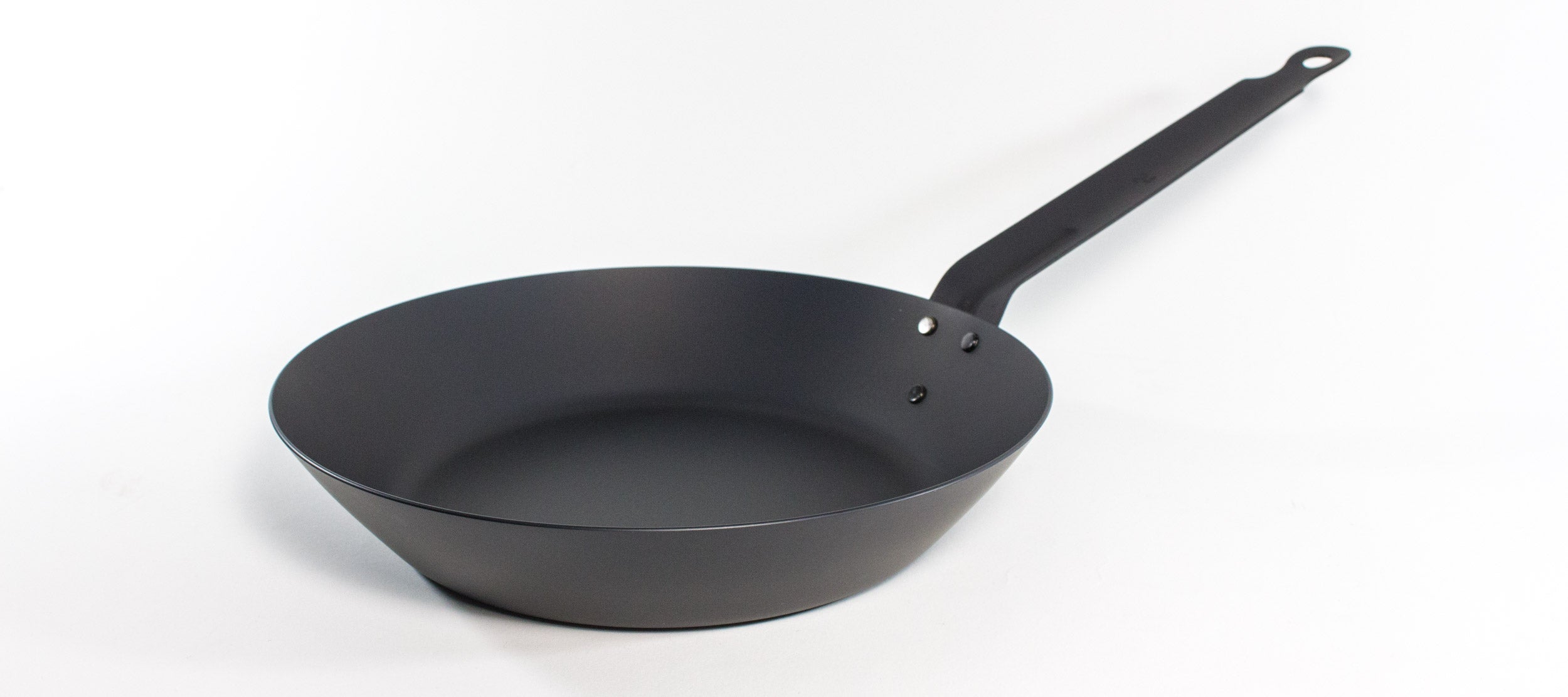We've introduced so many new pans this year we had to consider renaming our shop to PAN.
Some of these new additions are the incredible Kirameki Pans by Hatsukokoro. These pans are made of 100% iron (not cast iron) and are super light and thin. They don't require the intense seasoning of full on cast iron so we tend to treat them more like a Chinese Wok in terms of care.
The first time I used one of these I was very impressed with the performance. I started by bringing it up to a low-medium heat and throwing in some grapeseed oil. I let this heat up a bit, swirled it around to cover as much of the pan as possible, and let that sit for a few minutes. I poured excess oil into a jar (side note: I've been saving and reusing this oil!) and ran a paper towel over the inside of the pan to make sure it's fully coated. No need to oil the outside.
This is the point where you can adjust the heat to whatever level you need. Then add your cooking oil, butter, or whatever else you need and you're good to go!
Something to note here is that these pans heat up very fast, at least in my experience. That being said I also have very unreliable burners so I always have to be careful to not overheat or burn anything, but that has become a big factor in cooking with a Kirameki.
If you are cooking on induction make sure you bring the heat up gradually - don't shock the pan by cranking the heat right away as this could potentially cause a bit of warping.
So far I have used these pans for a wide array of dishes, as has my mum and partner. These have become the go-to pans for my mum to saute vegetables and make sauces, and for my partner these are the ultimate omelet and frittata pans!

Some of the most recent dishes I've used these pans for are sautéing onions and asparagus for a quiche, and frying tofu and mushrooms for a soba noodle bowl. The onions turned out perfect, though I definitely had to keep my eye on them so they didn't brown too much.

The tofu I made was absolutely perfect coming out of the Kirameki. A little crispy on the outside but still soft and full of flavour. I threw in the mushrooms right after the tofu - the pan just needed a little more oil - and it took no time for them to soften up and get nice and brown.


Cleaning a Kirameki is incredibly easy. Always dispose of leftover oil safely - don't just pour it down your sink! I usually wait until it's cooled down a bit and soak up as much oil as I can with a paper towel. I like to wash my pans when they're still a bit warm so nothing has dried out and caked on, and I always wash with super hot water. I know some folks won't like this but I always wash my pans with soap, not to the point where I've scrubbed away all of the oil/seasoning but enough to get rid of food residue and anything that will interfere with the next cooking session.
Always make sure you dry the pan fully after washing to prevent any rust from forming. I typically dry my pan with a towel and throw it back on a burner at medium heat to fully dry it out. If I'm feeling ambitious I'll re-oil the pan - sometimes I can't be bothered and so far I've had no issues!
All in all, these Kirameki pans are pretty damn great. They're light, thin, and very affordable. They've quickly become the most-used pans in my kitchen and are super popular here at KNIFE.
If you have any questions don't hesitate to contact us here.
Thanks for reading,
LB
